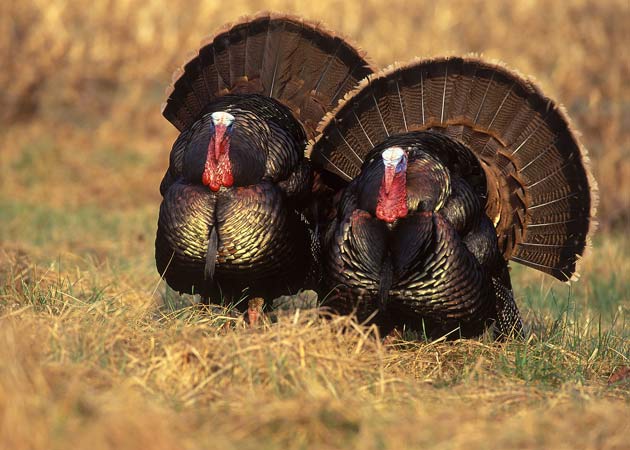Top 5 Surprising Turkey Facts

The average American eats 17.6 pounds of turkey per year, more than double the figure for 1970, according to the National Turkey Federation. To feed the growing appetite, some 273 million turkeys will be raised in the United States in 2009, and a good number of them will be consumed on Thanksgiving, after which many Americans will loll about, overstuffed, sleepy and in many cases intoxicated.
This is not what the Pilgrims had in mind.
The first Thanksgiving was a moment for the Pilgrims to thank God for allowing them to kill enough game and grow sufficient crops to get through the winter, says Anne Blue Wills, assistant professor of religion at Davidson College. Those Pilgrims would have spent much of their day in church contemplating the mercies of God's covenantal love, Wills argues.
Not until Sarah Hale, editor of Godey's Lady's Book and Magazine promoted for 50 years the idea of a regular Thanksgiving holiday did President Abraham Lincoln make it one in 1863. In the years since, the turkeys we eat have changed dramatically, and so has scientific knowledge of them. Among the things you might not know:
1. Turkeys Can Fly Wild turkeys feed on the ground, which might explain the myth of their flightlessness. They can in fact soar for short bursts at up to 55 mph. But their tendency to stay on or near the ground contributed to successful hunting that brought the wild population of turkeys down to about 30,000 in the 1930s. There are now 7 million of them.
2. Dark Meat is Rare Because ... Meat is muscle. And muscle is fed by blood. In the blood is myoglobin, which binds with oxygen and stores it in muscles for when it's needed. Myoglobin also makes meat dark. Muscles that are used most, like those in drumsticks (legs), have more myoglobin. Domestic turkeys are too fat to fly, so they don't use their breast muscles much, which is why breast meat is white. The breast of a wild turkey is entirely different, darker (and far tastier for those who are game).
3. Turkey Eggs Wouldn't Sell Chickens are champion egg-producers. Turkeys, not so good. Turkey eggs are bigger, so their nests tie up coop space. And farmers have learned that they make more raising turkeys for meat rather than eggs. Oh, and some turkeys are protective of their eggs, making the gathering more challenging.
Sign up for the Live Science daily newsletter now
Get the world’s most fascinating discoveries delivered straight to your inbox.
4. It's Not the Turkey That Makes You Sleepy Turkey contains a natural chemical called tryptophan, which we need to build proteins for our bodies. Indeed, tryptophan is also related to the production of serotonin, which helps us sleep. But all meat has about the same amount of tryptophan. Cheddar cheese has a lot more. What really makes you sleepier after a Thanksgiving meal compared to other meals is eating too many carbohydrates, from potatoes to pies. Alcohol can contribute, too.
5. Dinosaurs Had Wishbones, Too The wishbone, called a furcula, is the fusion of two collarbones at the sternum. It's where a bird’s flying muscles hook up. It's elastic and great for flapping. Turns out T. Rex and the Velociraptor had wishbones, too. While they didn't fly, this fairly recent discovery is one of the many bits of evidence that shows birds evolved from dinosaurs.
Sarah Hale probably never thought about any of this back in the mid-1800s. She just wanted the nation to celebrate a pious, patriotic holiday, said Wills, the Davidson College researcher. Hale used columns and stories in her magazine to portray Thanksgiving as a triumph of domesticity and rural simplicity over urban sophistication. She urged President Lincoln to create a single day on which all states would mark the holiday as a national event.
"The message is that the simple, pure, honest rural life, away from the temptations of the city, puts you in touch with true values," Wills said. "If we can just travel back to the old home place once a year we'll be protected from temptations and evil."
While some of that spirit might remain in the holiday, much indeed has changed about American culture in general and in how people view and partake in the holiday.
"For instance," Wills said, "I don't think football games and making the day after Thanksgiving the biggest shopping day of the year ever crossed her mind."
Robert is an independent health and science journalist and writer based in Phoenix, Arizona. He is a former editor-in-chief of Live Science with over 20 years of experience as a reporter and editor. He has worked on websites such as Space.com and Tom's Guide, and is a contributor on Medium, covering how we age and how to optimize the mind and body through time. He has a journalism degree from Humboldt State University in California.











